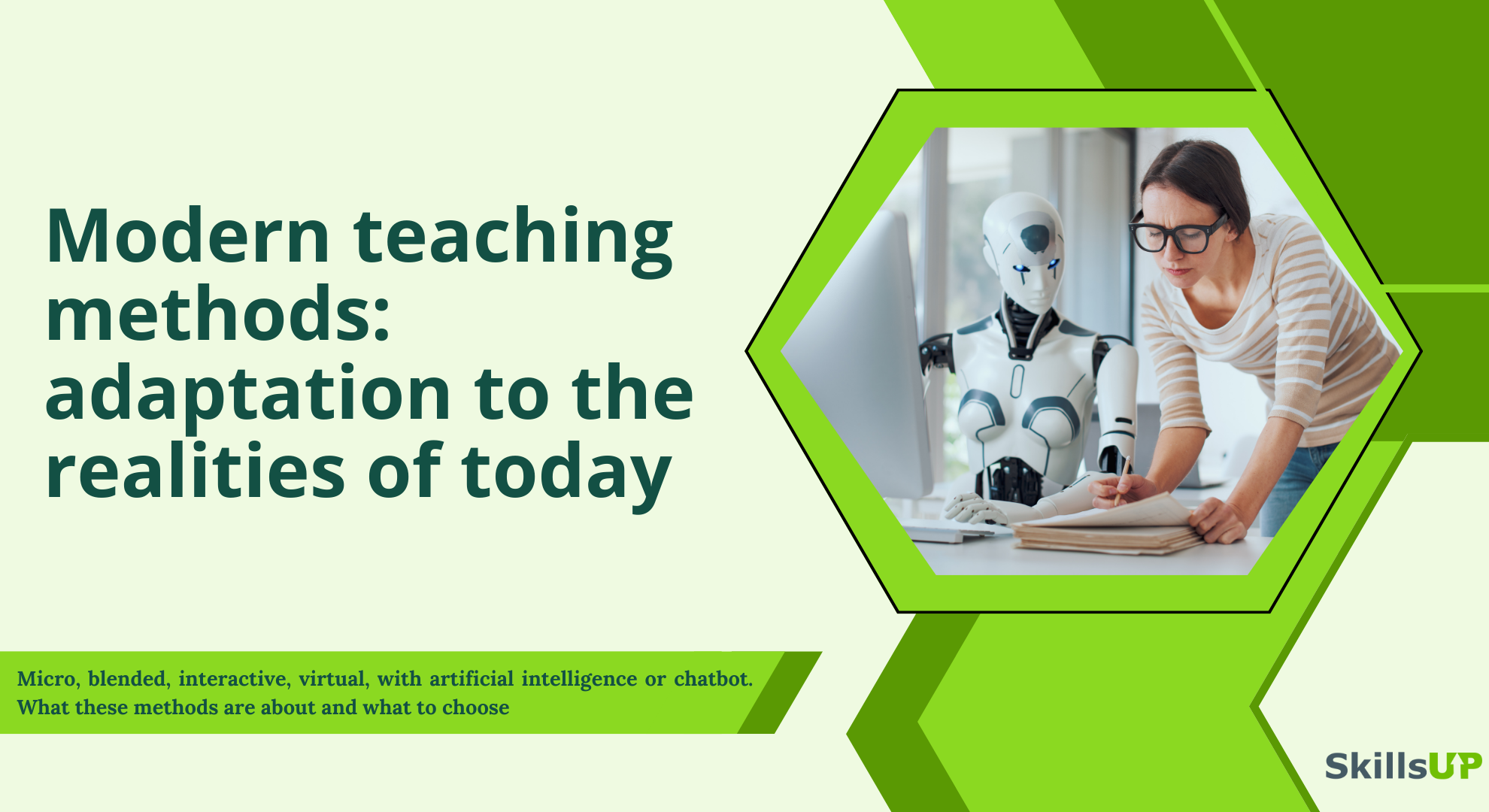Modern teaching methods: adapting to new realities

As part of career therapy, I periodically review vacancies with or for clients. This helps us discuss requirements, understand how to adapt the resume, what needs to be adjusted, and how best to prepare. Yesterday, for a recruiter who wants to move into the field of study, I was sent a vacancy, where one of the requirements was knowledge and application of modern teaching methods: microlearning, blended learning, interactive and virtual methods. "Oh, a great topic worth structuring and sharing!" – I thought.
- Microlearning: learning in small portions
Microlearning is an approach that involves the presentation of educational material in short, compact blocks lasting from 3 to 10 minutes. Its main goal is to ensure the rapid assimilation of specific information without overload.
Theoretical foundations:
- Focus on specifics: each micro-lesson is dedicated to one topic or skill.
- Flexibility: the format is easily integrated into the daily schedule, allowing you to learn "on the go".
- Accessibility: The use of mobile applications and online platforms makes the material available at all times.
Personal experience: I am currently studying as a Certified Yoga Teacher. The lessons are divided into short videos, informational texts, flashcards for better memorization and small tests. I choose when, how much and what to teach. But there is a caveat: you need motivation, discipline and awareness. For me, this training is in the category of "important, but not urgent", so if you have to sacrifice something, it is often among the first candidates.
How to adapt for corporate training:
- Set clear deadlines for module completion.
- Set aside working time for studying.
- Assign a mentor or supervisor to help keep you motivated.
- Integrate tests after each module.
- Conduct a final interview with an expert to consolidate knowledge.
- Blended Learning: Synergy of Formats
Blended learning combines independent study of the material, traditional meetings with the teacher, and digital tools.
Theoretical foundations:
- Combining formats: lectures, webinars, online courses, practical tasks.
- Personalization: adapting the application to the needs of specific groups or individuals.
- Feedback: live discussion with the trainer based on digital learning.
Case: Previously, I conducted traditional corporate courses: reading material, discussions, practical tasks. Now the company I work with has switched to blended learning: first, participants take online materials and tests, and only after that they come to a meeting with me for an in-depth study of cases.
For corporate training:
- Process the training request.
- Analyze the material you provide to listeners, or
- Record all the necessary lectures with the trainer who will conduct the practice. These recordings will be useful for the following groups.
- Set aside working hours for studying.
- Do final testing and performance analysis.
- Interactive Teaching Methods: Engagement Through Interaction
Interactive methods are aimed at the active participation of listeners: discussions, role-playing games, group work.
Theoretical foundations:
- Active learning: participants do not just listen, but are involved in the process.
- Instant feedback: the ability to immediately correct mistakes.
- Increased motivation: group interaction improves communication.
Case: My favorite format is collective intelligence. Participants are divided into groups, work on a case, present solutions, receive feedback and improve it. And this is possible even online.
Works great for corporate training. This approach helps employees develop collaboration and communication skills, as well as build relationships, learn from each other, and take responsibility for their own suggestions and argue for them. This approach improves engagement, motivation, and broadens the perspective on work challenges.
- Virtual Teaching Methods: A New Dimension of Education
Virtual methods (VR/AR) create immersive environments where skills can be practiced without risk.
Theoretical foundations:
- Immersiveness: the effect of presence improves the assimilation of the material.
- Practical orientation: simulations allow you to practice skills.
- Affordability: Training is available regardless of location.
The idea that I would implement in corporate training: VR trainings for leaders who simulate complex negotiations or speeches in front of large audiences.
- Learning with AI: personalization to the maximum
AI agents can be your personal trainers, tailoring training to your pace and style.
Theoretical foundations:
- Customization: individual training programs.
- Practical orientation: interactive scenarios.
- Availability: 24/7 access to the "trainer".
Own desire: I haven't dared to try learning languages with a digital avatar yet, but an advertisement about a Bulgarian course with Jared Leto sounds attractive. If I try, I will definitely share my experience!
In corporate training, it is already possible to test language courses with AI trainers to develop language skills. It is better to learn grammar with a real trainer.
- Chatbots for Learning
Chatbots can help with reviewing material, answer questions, and even conduct small tests.
Advantages:
- Automation of the learning process.
- Quick access to information.
- Gamification of the educational process.
Own desire: Make a mini-course on project management using a chatbot.
But for now, I work through mentoring programs and individual coaching.
Conclusions and recommendations
Modern training methods can help companies not only optimize costs, but also increase the efficiency of personnel development, of course, if these methods are seamlessly integrated into current personnel development processes.
📌 The main thing: do not be afraid to experiment and innovate – the future belongs to those who are ready for change! 😉
